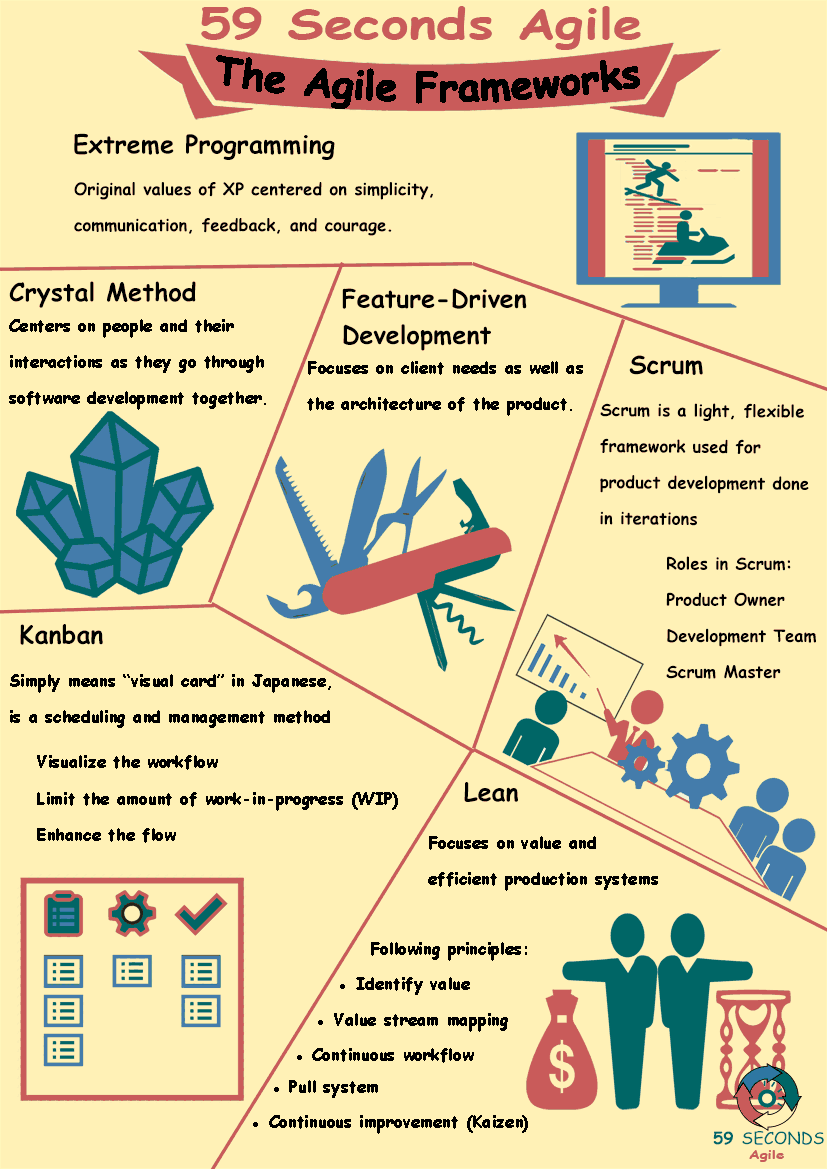
The Agile Frameworks for Product Owners
One of the reasons why most organizations adopt Agile software development is because of its simplicity and flexibility. The Agile practices give room for development teams to be creative in carrying out their responsibilities while working with a prioritized backlog of features that ensures all efforts lead to a product with high business value. Two of the famous practices of Agile are Scrum and Kanban. Scrum gates the development work through a set of meetings and a timebox called sprints. Sprints span from 2-4 weeks with the main goal of delivering a potentially shippable product increment. Scrum have “ceremonies” or meetings that are utilized to initiate, close and check the update of the project. These ceremonies are planning, refinement, daily standup meetings, retrospective and review.
The planning ceremony marks the start of development for the scrum team. In this ceremony, the product owner shares the priorities of the sprint in respect with the business value that the work presented offers. As the team develops the project, they have a 15-minute daily standup meeting to check on the progress of the work that they’re doing. Each team member shares what he is doing, what he will be doing after the daily standup meeting and raise any impediments to his development. In the course of the sprint, the team holds a refinement meeting to discuss and refine the future items they’ll be working on. At the end of the sprint, they hold a review meeting to share the potentially shippable product increment they developed to the stakeholders and solicit feedback. They also conduct a retrospective meeting to assess their current working agreement and adjust to any items for improvement.

Kanban
Kanban is an Agile practice that puts emphasis making the work in progress available on a board as opposed to utilizing meetings to get updated on the progress of the project. In Kanban, the team creates a Kanban board with columns that represent development phases – To Do, Development In Progress, For Testing, For Release, Released. Cards are made to represent the work the team is doing. The team moves the card daily in the column to indicate its progress. Kanban has a concept of “Work in Progress” (WIP) limit that serves as the guide to optimizing the work the team can handle in a specific column. For example, the team can only handle five (5) items in Development in Progress. Their WIP limit is five. The team can only take in an additional item in Development in Progress if one of the current work is transitioned for Testing.
Agile Values and Principles
Aside from these widely used practices, to maximize the benefits of Agile, the team should be able to embody its values and principles. The Agile Manifesto reflects the mindset an Agile practitioner should have. In the manifesto, it says that an agile practitioner should prioritize: individuals and interactions over processes and tools; working software over comprehensive documentation; customer collaboration over contract negotiation; and responding to change over following a plan. Observing these apply not only to the development team but the product owner, scrum master and stakeholders as well. It takes the entire team to be able to understand what these principles are so that Agile can be fully maximized.
In Agile, the team is comprised of the product owner, agile coach/scrum master and the development team. The role of the product owner is considered as the very challenging role in an Agile setup. The product owner serves as the business representative for an Agile project. He prioritizes the work done by the team, works closely with the clients and negotiates with them. He is the main decision-maker when it comes to the business priorities. While the product owner may not be entirely involved in the day-to-day activities in development, it is encouraged that his lines are open just in case the team has questions on the work committed.
Our Favourite Agile Books
We found these books great for finding out more information on Agile Scrum:
The Product Owner
The main responsibility of the product owner is to provide a prioritized backlog of work for the team. In order for him to work efficiently and effectively, whether as an internal or external product owner, he must have a good understanding of the Agile practice the team observes. In Scrum, the product owner should present during planning, refinement, and review. These are the ceremonies where the business priorities are discussed and the backlog is presented.

